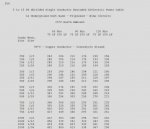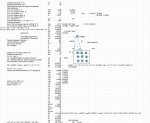mshields
Senior Member
- Location
- Boston, MA
Am reviewing a project which shows 9 - 750kcmil for a 3000A, 4160V feeder.
I think we're fine with that quantity. BUT would like to be able to be more scientific about it. I understand that Neher McGrath calcs in SKM require an add in and that it is very expensive. Short of that, how can I go about determining exactly what the rated ampacity of this feeder is?
I think we're fine with that quantity. BUT would like to be able to be more scientific about it. I understand that Neher McGrath calcs in SKM require an add in and that it is very expensive. Short of that, how can I go about determining exactly what the rated ampacity of this feeder is?


